MODERN DAY SERVICE SCHEDULE & RUNNING RECOMMENDATIONS FOR CLASSIC TWO-STROKE SCOOTERS
Whether you own a standard Vespa/Lambretta or a tuned Malossi/RB250 there is a lack of detailed service data to guide the modem owner on these vintage machines. Darrell Taylor uses researched information and industry standards from the ‘Big 4’ to present his current schedule for servicing and maintaining classic two-stroke scooters.
Over the past few months we’ve covered modern two-stroke performance levels that are now commonplace in the scootering world, as well as the higher performing versions used in scooter sports, like road racing and sprinting (and those who are brave enough/have deep enough pockets to use them on the road). We have also made comparisons against other manufacturers in the industry such as Yamaha and Honda etc. along with providing some of their historical development data which shows us the performance levels they achieved with their big development budgets.
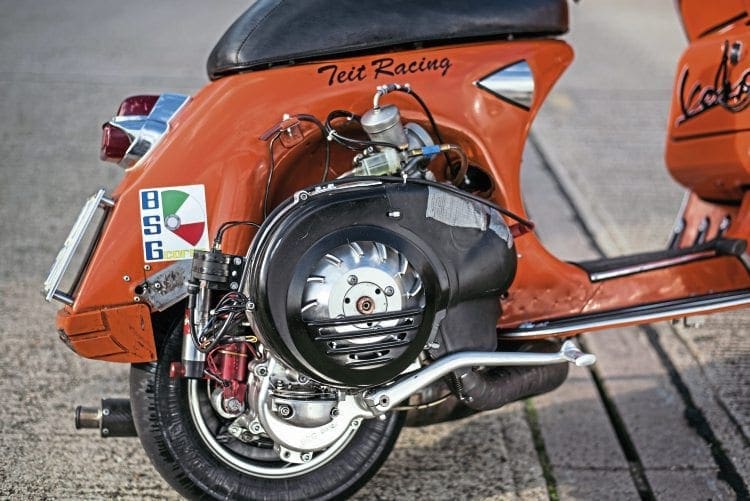
Last month we presented some surprising findings about the maintenance and parts replacement regime that goes hand-in-hand with motors at these performance levels, right down to the lowest powered production models which are considerably more forgiving.
So what of the current crop of popular scooter engines?
These days the majority of scooterists are using engines in the range of 125cc at 10bhp up to 252cc at 35bhp, and sit in that safer BM EP zone between 6-8 bar. We can establish from research that as performance levels go up, service requirements do too. But even the standard engine models from major manufacturers running on clean inducted air from airbox systems, are quoting top-end strip, inspect, rebuild to replace worn parts at as low as 2400 miles!
How many people do that with their classic two-stroke Lambretta or Vespa?
But more importantly: how many scooter owners would accept failure after 2400 miles, should it occur after failing to meet the maintenance requirement/service schedule?
A car owner would have to accept fault/responsibility if the service book provided stated a first service at 6000 miles and the engine let go at 12,000 miles due to forgetting the 6000 service. The issue with classic two-strokes is, where is the service book?
Responsibility?
The next point is that if you took your new car to a local engine tuning shop and had its power output tripled from 100bhp to 300bhp, and then six months down the line took it for a main dealer service, only to be told the brakes, clutch, tyres, driveshafts and turbo are all excessively worn, would you complain? After all it’s a brand new car that cost a lot of money! I’m sure some may try to complain, in a vain attempt to get some free new parts, and perhaps not disclose the tuning work done…
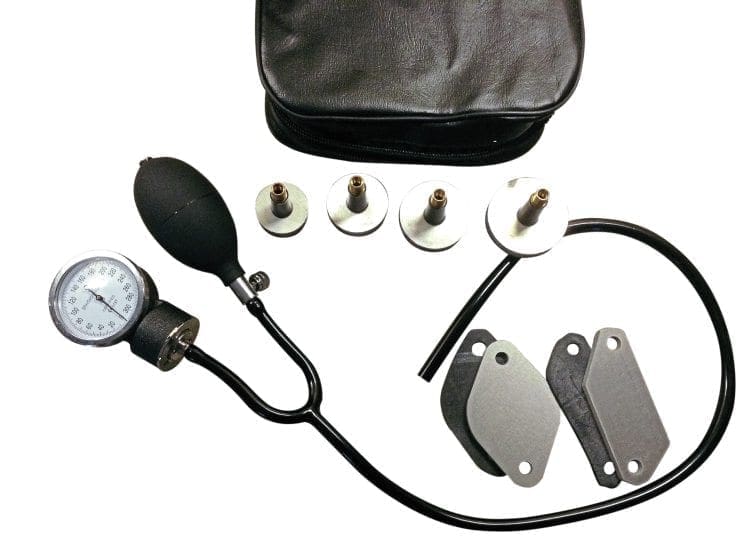
But the honest perspective, from any fair-minded person, would be that you know what you have taken on and realise the tuning upgrades you commissioned can push parts to tipping point and require increased maintenance and more frequent parts replacement. So be realistic.
Filtered or not filtered?
As mentioned before, the scooter engine bay under those panels gets dirt pushed around by the tyre, then distributed through the cowling fan, right into the carbs bell-mouth area. So can we really establish a set service time with such variables? If you’re based ‘down under’ where they tell me they suffer from huge amounts of dust, then the motors suffer badly when they try to run without a filter.
That illustrates how important it is for engine lifespan and service interval extension to run fully filtered, on which the below schedule is based. If running unfiltered, it’s difficult to ascertain the level of wear on an unfiltered engine… so you will find some useful methods that can help establish if wear is occurring, but as a basic rule of thumb I’d suggest at least halving the intervals on comparative unfiltered set-ups.
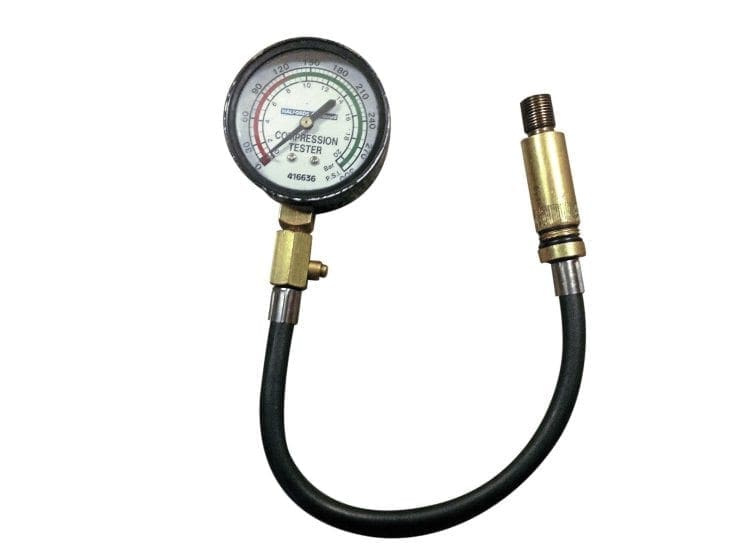
So this all begs the question: If not filtered, is there an effective method of measuring top end wear? Well yes there is, it’s a method I read once in an American kids’ 50cc MX manual that sticks as a great working tool. It was first featured because they realised not every ‘motocross dad’ was also a capable mechanic. So they provided this method as an alternative to stripping down the top-end to measure ring gaps and piston to bore clearance every other weekend. It also potentially lets you know if the head gasket is weeping or a ring is stuck etc.
The trick was to establish a starting point PSI reading from using a compression tester (use the same one every time as all read different) they are simply screwed into the spark plug hole, and always repeat the tests in the same way each time. So if for example you start with 100psi (checked after about 50 miles of running in on new builds) and then continue to check it at set intervals, to watch for a drop in psi pressure.
When it drops to 90% of original value then it will be down on power and getting close to needing a rebuild/service. At 80% or less it’s got a problem and requires a strip and rebuild ASAP.
Daily pre-ride checks:
- If starting out with a new engine or top-end, its best to do the first 600 miles running in locally in short journeys and complete the first 600 mile service prior to taking on any major extended distance journeys.
- How old is the fuel and oil, and how full is the tank? If more than three weeks old then replace it. If low on fuel, then ride cautiously to the nearest fuel station to fill with new. Do not use ‘fuelsaver’ brands: go for a premium unleaded from a frequently filled station with a good turnover, as this will mean the fuel is fresh/retained near its claimed octane level.
- Ensure there is enough fuel and oil for the planned journey.
- Check operation of both brakes and for binding.
- Check tyre pressures and inflate if required (they regularly lose air due to moisture evaporation and rubber allows small amounts of air to pass over time).
- Check the steering and the suspension operation.
- Check electrical and lighting operation.
- Avoid filling the scooter fully with fuel for return trip if it is intended to be laid up for a few weeks.
Service plan:
Below is a service type plan I have produced, which is loosely based around a modern performance motor, running a filtered-carb, starting off from a new build. So this assumes all components upon being built were in a fully serviceable condition, without any discernible wear, typical of where many regular medium to high mileage users would start off a new riding season following a full winter rebuild.
- Note the make/model, registration number, frame and engine number, when the next service is due, the new engine RECORDED start mileage and the date.
- Leak down test results (note any areas that required attention).
- Fuel flow test results, ml per minute tap on: and ml per minute tap reserve.
- Compression test and record psi reading.
- Pre-calculate psi 90% warning figure psi.
- Spark gap test result (ability to jump as a measure of ignition system health) mm.
- Independent earth from cdi earth direct to mag or stator.
- Attach start mileage label showing next service due sticker in a safe yet visible place on the machine, running in period Nikasil/cast 600/1000 miles.
Checks to do on a new build installation:
- While running in engines make a note and, set static timing to 1° retarded from standard setting and set richer initial jetting with pilot up one size, needle one clip richer, and main jet up two sizes.
- Fuel tap and control rod/linkage: ensure positions are set correctly on lever in particular that the reserve position can be fully opened with bridge piece fitted.
- The rod and fuel tap itself is not touching down on the engine mount.
- Fuel cap breather is clear, fuel pipe routing is off the engine with no kinks or sat above bump stop.
- Fuel tank is rubber mounted with no frame contact.
- Meticulously cleaned fuel tank or tank sealer product used as blast/polishing grit will destroy a motor.
- Check for close fitting fan cowl for proper cooling.
- Check choke disengages fully.
- Check full throttle slide fully opens past bore and needle is securely held down.
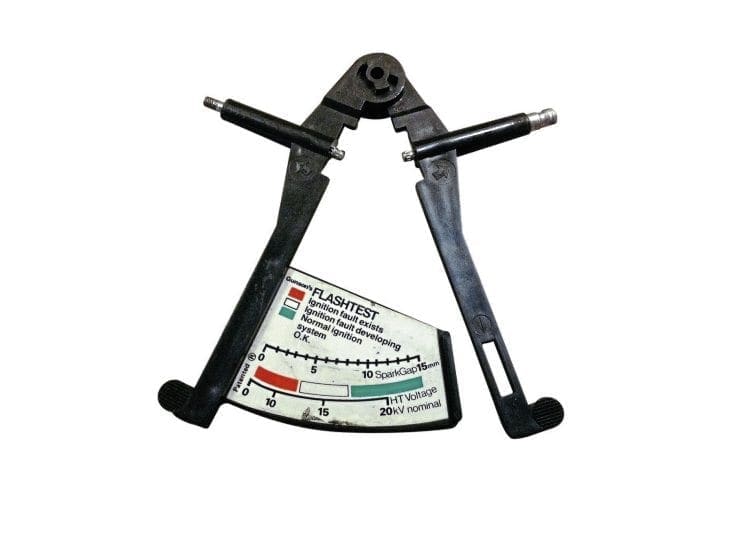
Checks as part of first service at 600 miles, record all details and retain for future service comparisons:
- Fuel flow test of ml per minute flow with tap on and reserve.
- Clean carb mounted fuel filter if fitted.
- Compression test and record psi reading — same as original test or a slightly higher reading indicates a good ring seal, if below 80% possible leak/gummed ring/worn rings.
- Spark gap test result (ability to jump a set gap, as a measure of ignition system health).
- Clean air filter.
- Tension chain if required (new chains in particular).
- Tension can be checked through oil level plug if no bottom guide fitted. Gearbox oil change, clean magnetic pick up oil and not quantity.
- Re-torque head nuts setting.
- Re-torque mag housing/stator fixings.
- Adjust ignition timing back to standard if now run in (or to complete last 400 miles on cast).
- If any difficulties occurred while running, strip top end to clean off any high spots or ridges with fine 600 wet n’ dry, rebuild and leak down test. Attach head, re-torque, label mileage.
- Also leak down test the engine if it shows any signs of a higher tick-over or engine running on/erratic running conditions/plug colour.
- Check spark plug colour, then clean, check nipple is secure if fitted and adjust gap to 0.45-0.5mm or replace plug if required.
- Inspect exhaust for leaks or any cracks, tighten all brackets/fixings/ springs present.
- Prep and paint any rusted bare metal areas.
- Inspect front engine mounts for cracks/ splits/collapse of rubber and rear (shock absorber)for same plus bush/pin wear (exhausts will crack with mount issues).
- Full nut and bolt check/clean off/ lubricate.
- Adjust cables, tighten trunnions if slipped (best if doubled up) reset tick-over if required.
- Check rear hub/layshaft bearing.
- Torque hub nut.
- Check kickstart operation.
- Maximum recorded cylinder head temperature (if CHT gauge fitted) °C/°F
- Maximum recorded exhaust gas temperature (if EGT fitted) °C/°F
- Make jetting/ign timing adjustment if running too hot.
Checks as part of second service at 2500 miles, record all details and retain for future service comparisons:
Same as 600 miles plus:
- Clean/check dismantled carburettor to check jets/galleries/slide wear/ needle wear/needle clip for tightness/needle valve and seat/float height set/float is okay and not taken petrol inside.
- Check inlet rubber for splits or cracking and clamps/jubilee clips tighten without slipping.
- Check inlet manifold damage from frame or cables.
- Reed-valve assembly fixings tight, vulcanised rubber not perished, reed petals for chipping or damage.
- Replace fuel pipe if necessary/clean tank mounted fuel filter.
- Check for cable damage inners and outers.
- Inspect clutch and replace any items if worn enough to not reach the next service.
- Repack silencer packing if getting noisy.
- Check wiring connectors, cables and earths HT lead and plug cap, check for corroded connectors.
- Check flywheel for damage/cracks magnets/rivets boss taper damage and woodruff key.
- Check stator for loose wires, rivets for blackening, plus any signs of rubbing on flywheel.
- Check for accurate gear selection and possible jumping out.
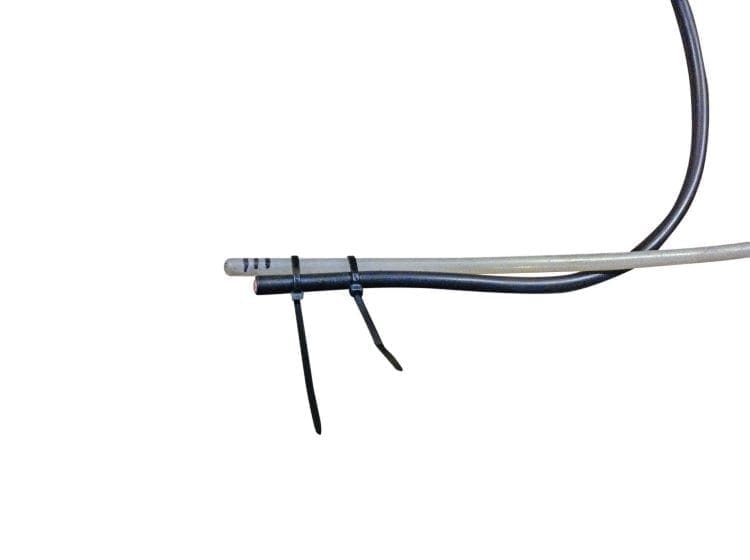
Checks as part of third service at 5000 miles, record all details and retain for future service comparisons:
Same as 600 and 2500 plus:
- Decoke top-end and exhaust system.
- Check top-end for wear damage cracks, inspect clean and replace worn parts as required (e.g. piston rings /piston/ gudgeon pin/small end bearing, use new circlips every time).
- Check bore for damage or uneven wear/clearances.
- Check con rod for wear/blueing.
- Check gear swivel for wear and gear change rod creating sloppy gear change action.
- Check chain for stretch / for damage to rollers / split pin or rivet link / tensioner and guides.
- Check crank driveside bearing and mag bearing for excessive play.
Checks as part of fourth service at 7500 miles, record all details and retain for future service comparisons:
Repeat 600 and 2500 combined.
Checks as part of fifth service at 1000 miles, record all details and retain for future service comparisons:
Repeat 600, 2500 and 5000 combined. And so on…
Worth noting:
Seriously consider the work required to carry out this service in the chassis. It would be wiser to drop the motor to give it a full strip and inspect overhaul in particular during the closed season. Winter is the perfect time to prep the engine for its next 10,000 miles, with it sat on the work bench. There is a good chance that the crank will require a rebuild and possibility that the cylinder may need a re-bore or re-plate along with a new piston. Other items to consider at this level of mileage is pretty much everything left in the engine which has not been previously inspected, and those listed below. Some are subject to long-term wear and often get replaced as part of a rebuild, due to being low-cost and the fact that it’s a false economy not to replace them in terms of time investment, be it yourself doing the work or a paid dealer.
Long term items to consider for replacement during a rebuild:
- Hub nut/wavy washer/lock plate/bolt.
- Layshaft 0-ring.
- Layshaft bearing and seal.
- Brake shoes/pivot pins/cam/0-ring.
- Spring and balls for gear cursor.
- Sliding gear cursor.
- Wishbone pawls.
- Gear change shaft and bushes in casing.
- Kick start plunger/teeth.
- Gearbox endplate bearing, endplate studs/nuts/spring washers.
- Front sprocket/drive sleeve/oil dish/ spring/spring cap/sliding dog.
- Drive bearing /drive seal/seal plate/csk bolts/halite gasket.
- Mag bearing, seals, grease, L-spacer, mag gasket.
- Flywheel key nut and washer cable guide cable grommet/plate.
As part of the service work, the following items will be used:
Thread locking medium and high strength, sealant, grease, oil. Torque settings vary from model to model so source an appropriate data sheet. Recommended storage procedure if laid up for four weeks or more: Drain down fuel tank, drain down carb float bowl, start engine and allow to run out of fuel/burn off, syringe 10ml of two-stroke oil down plug hole, turn over engine and replace plug. Alternatively weekly start the engine up during lay-up periods and replace the old fuel before riding.
Nobody said looking after and maintaining a classic two-stroke scooter was going to be easy. Anyone can ‘chance it’ and tell you ‘I’ve done 20,000 miles and didn’t even change a plug’. But as performance expectations increase, so do the associated owner responsibilities and service/maintenance schedules. The information is there to be used, dismiss it at your peril… or make sure you have a good breakdown service membership to hand!
Words & Photographs: Darrell Taylor



